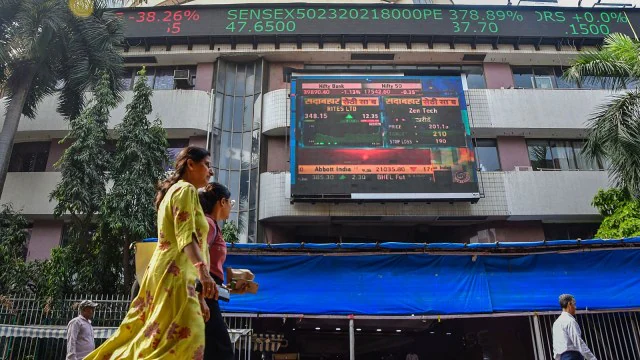Disha Tandon, Pune
The Indian equity benchmarks Sensex and Nifty 50 fell on October 4, marking their fifth consecutive session of declines and the worst-performing week in over two years. This downturn stems from escalating geopolitical tensions and significant foreign institutional selling, leaving investors anxious.
The frontline indices dropped approximately 4.5% for the week, with a notable 2% decline on Thursday alone. After briefly enjoying positive returns, the markets have retraced over 5% since reaching record highs on September 27.
The 30-share BSE Sensex fell by 808.65 points (0.98%) to close at 81,688.45. It experienced considerable volatility, with a low of 81,532.68 and a high of 83,368.32, resulting in a swing of 1,835.64 points. The NSE Nifty 50 similarly closed lower, down 235.50 points (0.93%) at 25,014.60, after hitting a high of 25,485.05 during the session.
Broader markets also felt the impact, with small-cap and mid-cap stocks losing 2.5% and 3.2%, respectively. Notably, Reliance Industries, a heavyweight in the Nifty 50, saw a significant decline of 9.2% during the week.
Investor wealth has diminished by nearly ₹13 lakh crore over the past five trading sessions, with the combined market capitalization of Indian stocks falling from ₹479 lakh crore to ₹466 lakh crore. Such sharp losses highlight the market’s vulnerabilities amid external pressures, particularly geopolitical uncertainties.
Several interrelated issues have contributed to this downturn. The killing of Hezbollah leader Sayyed Hassan Nasrallah has heightened investor fears, leading to escalating retaliatory attacks in the region. Crude oil prices have surged by over 5% in recent days, as geopolitical tensions typically drive investors toward safer assets, increasing demand for gold and pulling capital away from riskier equities.
Heightened tensions in the Middle East raise concerns about potential supply disruptions, pushing Brent crude prices to elevated levels. With one-fifth of global crude passing through the Strait of Hormuz, any retaliatory strikes by Israel against Iranian oil fields could drive prices even higher, adversely impacting India, a net importer of crude oil.
Foreign Institutional Investors (FIIs) withdrew ₹15,243.27 crore in a single day, marking the largest outflow in four years. Over the last three sessions, FIIs have pulled out nearly ₹30,613 crore from Indian equities, with much of this capital shifting to China, which recently introduced stimulus measures to revitalize its economy.
New regulations from SEBI aimed at curbing excessive growth in the derivatives market have also contributed to market uncertainty. These regulations include reducing weekly expiries and increasing lot sizes, likely causing participants to reassess their strategies.
China’s monetary policies, particularly the reduction of the reserve requirement ratio, have made its markets more appealing to investors. The Hang Seng index surged about 18% in September, attracting foreign investment that might have otherwise gone to India.
While the current market correction may seem significant, it is relatively small and primarily a technical adjustment. Investors should not be overly concerned; such corrections are typical in rapidly rising markets. Although the immediate future remains uncertain, the long-term outlook for Indian growth remains positive.
